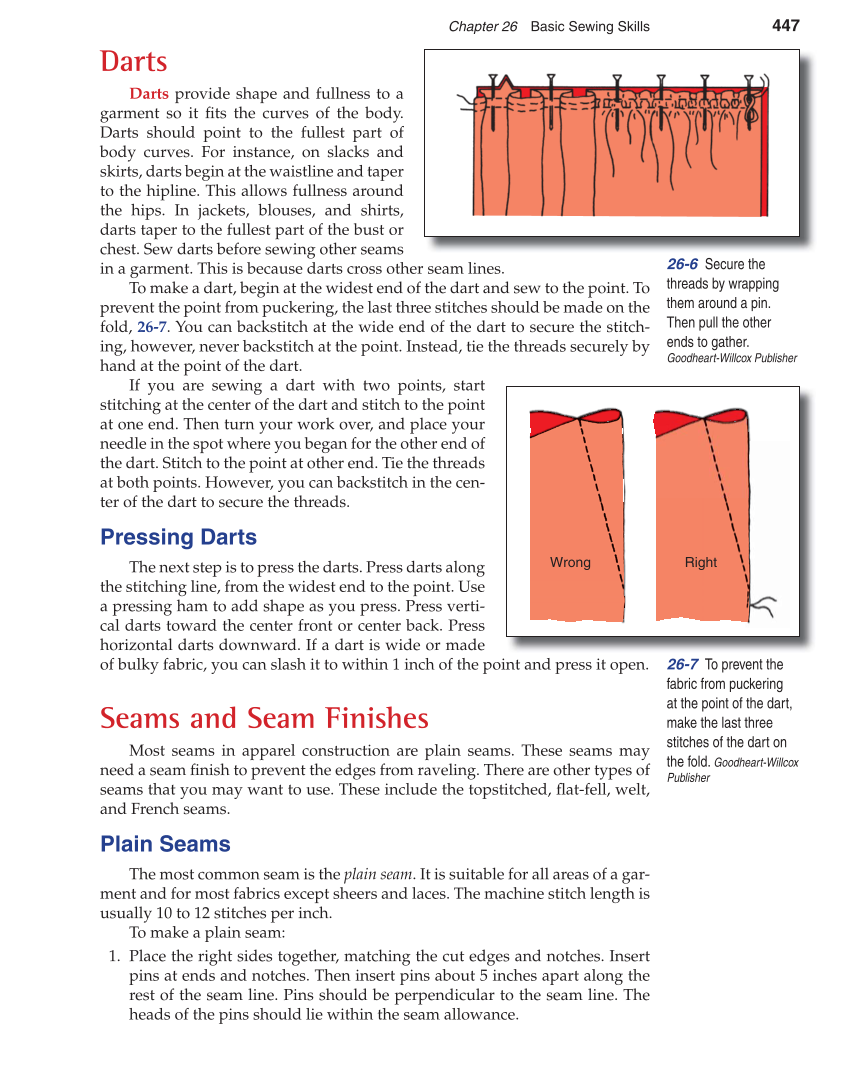Chapter 26 Basic Sewing Skills 447 Darts Darts provide shape and fullness to a garment so it fi ts the curves of the body. Darts should point to the fullest part of body curves. For instance, on slacks and skirts, darts begin at the waistline and taper to the hipline. This allows fullness around the hips. In jackets, blouses, and shirts, darts taper to the fullest part of the bust or chest. Sew darts before sewing other seams in a garment. This is because darts cross other seam lines. To make a dart, begin at the widest end of the dart and sew to the point. To prevent the point from puckering, the last three stitches should be made on the fold, 26-7. You can backstitch at the wide end of the dart to secure the stitch- ing, however, never backstitch at the point. Instead, tie the threads securely by hand at the point of the dart. If you are sewing a dart with two points, start stitching at the center of the dart and stitch to the point at one end. Then turn your work over, and place your needle in the spot where you began for the other end of the dart. Stitch to the point at other end. Tie the threads at both points. However, you can backstitch in the cen- ter of the dart to secure the threads. Pressing Darts The next step is to press the darts. Press darts along the stitching line, from the widest end to the point. Use a pressing ham to add shape as you press. Press verti- cal darts toward the center front or center back. Press horizontal darts downward. If a dart is wide or made of bulky fabric, you can slash it to within 1 inch of the point and press it open. Seams and Seam Finishes Most seams in apparel construction are plain seams. These seams may need a seam fi nish to prevent the edges from raveling. There are other types of seams that you may want to use. These include the topstitched, fl at-fell, welt, and French seams. Plain Seams The most common seam is the plain seam. It is suitable for all areas of a gar- ment and for most fabrics except sheers and laces. The machine stitch length is usually 10 to 12 stitches per inch. To make a plain seam: 1. Place the right sides together, matching the cut edges and notches. Insert pins at ends and notches. Then insert pins about 5 inches apart along the rest of the seam line. Pins should be perpendicular to the seam line. The heads of the pins should lie within the seam allowance. 26-6 Secure the threads by wrapping them around a pin. Then pull the other ends to gather. Goodheart-Willcox Publisher 26-7 To prevent the fabric from puckering at the point of the dart, make the last three stitches of the dart on the fold. Goodheart-Willcox Publisher Wrong Right
